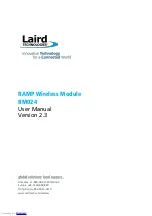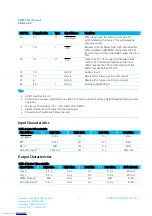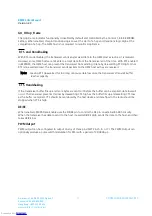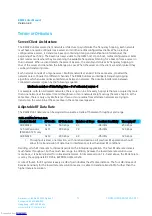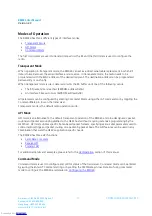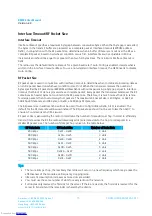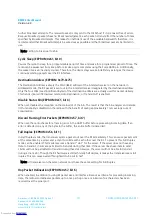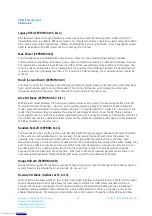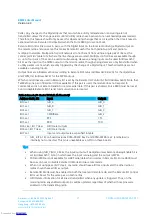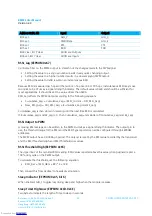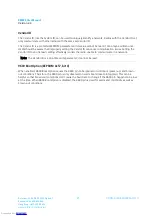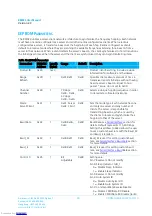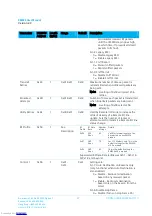
RM024 User Manual
Version 2.3
Americas: +1-800-492-2320 Option 2
Europe: +44-1628-858-940
Hong Kong: +852-2923-0610
www.lairdtech.com/wireless
12
CONN-GUIDE-RAMP24-0413
T
HEORY OF
O
PERATION
Server/Client Architecture
The RM024 utilizes server-client network architecture to synchronize the frequency hopping. Each network
must have one radio configured as a server and all other radios configured as clients. When a radio is
configured as a server, it transmits a beacon containing timing and identification information at the
beginning of each hop. The beacon is never visible to the OEM host. Upon boot, radios configured as clients
enter receive mode where they are scanning the available frequencies listening for a beacon from a server in
their network. When a client detects the server’s beacon, the client synchronizes its frequency hopping to
that of the server and transition the InRange pin Low. When the server and the client are synchronized they
can begin transferring data.
Each network consists of only one server. Multiple networks can exist in the same area, provided the
networks are configured on different channels. The RM024 utilizes an intelligent Frequency Hopping
algorithm which ensures minimal interference between networks. The possible interference between
collocated networks is given by the following equation:
Maximum number of interfering bins = # of collocated servers -1
For example, with ten collocated networks, there is up to nine bins every hop cycle that are occupied by more
than one network at the same time. Although two or more networks might occupy the same hop bin at the
same time, there is truly only interference if two or more radios from alternate networks are trying to
transmit on the same bin at the same time in the same coverage area.
Adjustable RF Data Rate
The RM024’s RF data rate can be adjusted to provide a trade-off between throughput and range.
Table 6: RM024 RF Data Rate
Product Model
RF Profile
RF Data Rate Number of Hops
Receiver Sensitivity Throughput
1
All RM024
0x00
500 kbps
43
-94 dBm
250 kbps
125 mW versions
(RM024-X125) only
0x01
280 kbps
79
-95 dBm
120 kbps
All RM024
0x03
280 kbps
43
-95 dBm
120 kbps
1.
Throughput is ideal, one direction, with no retransmissions. All practical RF applications should
allow for retransmission of data due to interference or less than ideal RF conditions.
Deciding which RF data rate to choose depends on the individual application. The fast RF data rate delivers
much faster throughput, but has much less range. In addition, because the lower data rate solution uses
more hops, it is better situated for collocated networks. In firmware version 1.2-5 and above, the RF data rate
is set by the appropriate RF Profile, EEPROM Address 0x54.
A rule of thumb for RF systems is every six dB of gain doubles the effective distance. The four dB increase of
Receive Sensitivity for the lower data rate solution means it is able to transmit almost 60% further than the
higher data rate solution.
Downloaded from
Downloaded from
Downloaded from
Downloaded from
Downloaded from
Downloaded from
Downloaded from
Downloaded from
Downloaded from
Downloaded from
Downloaded from
Downloaded from

